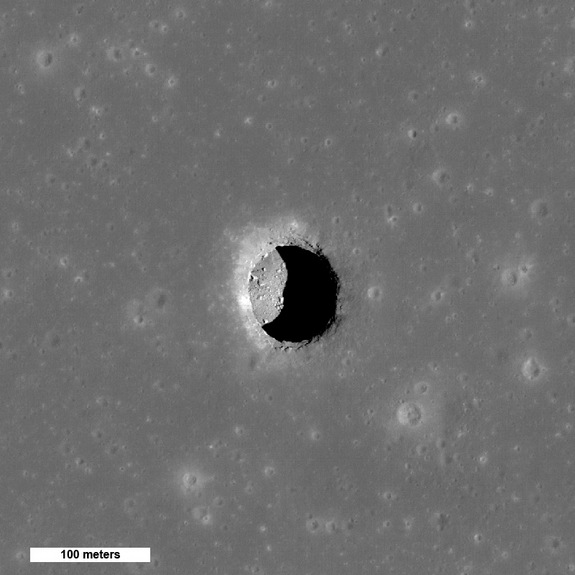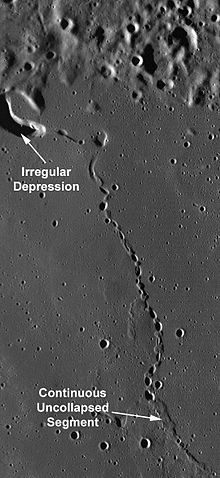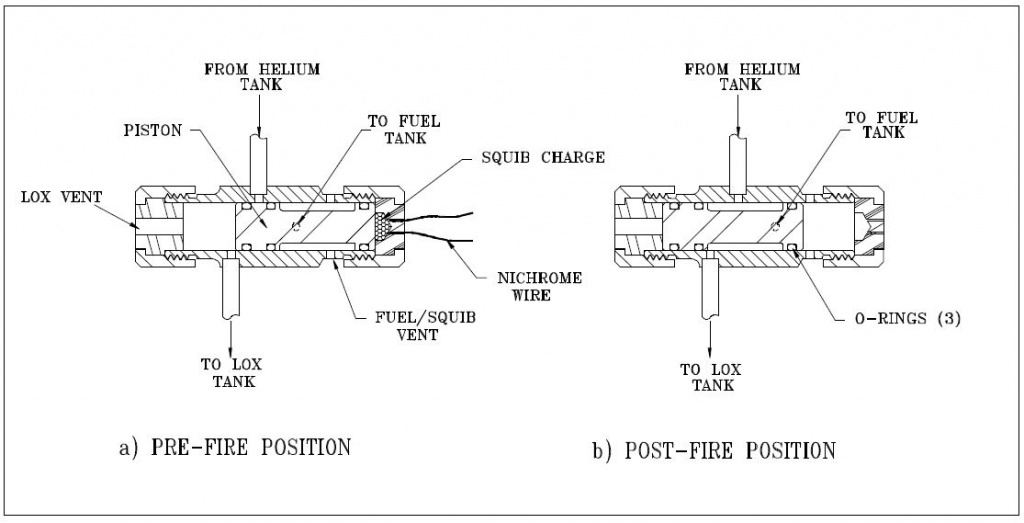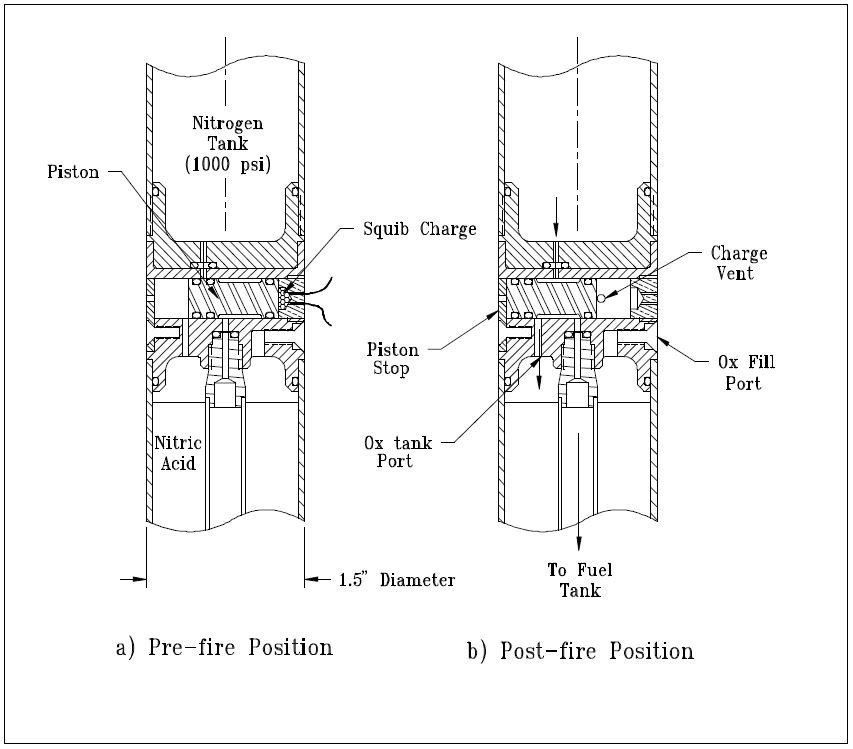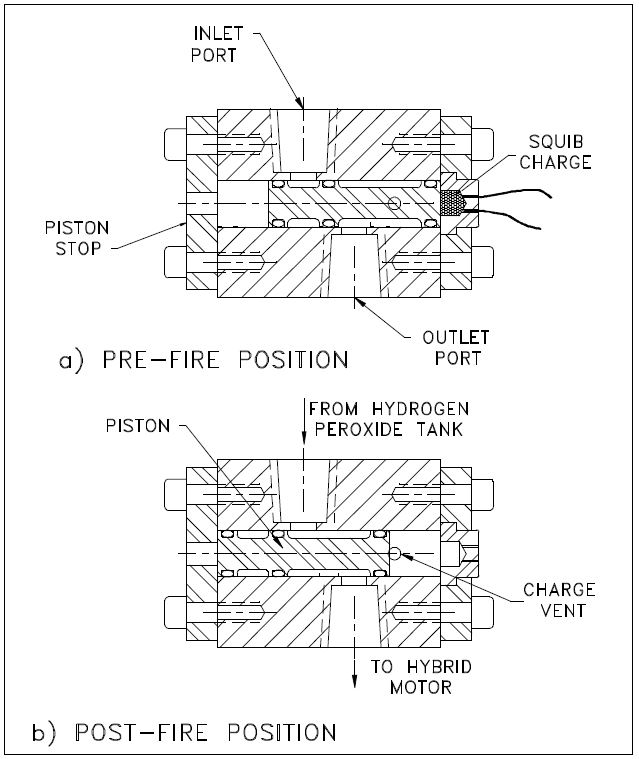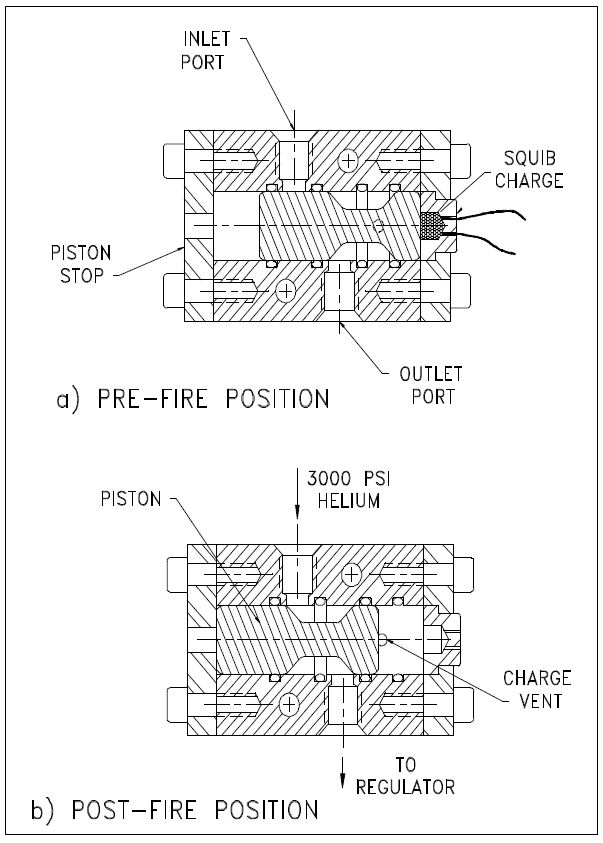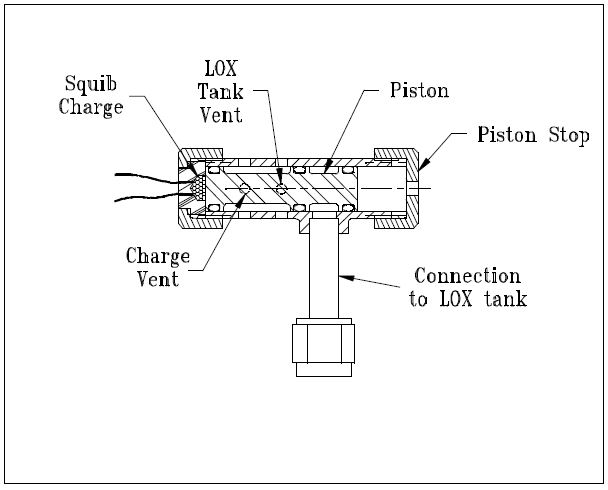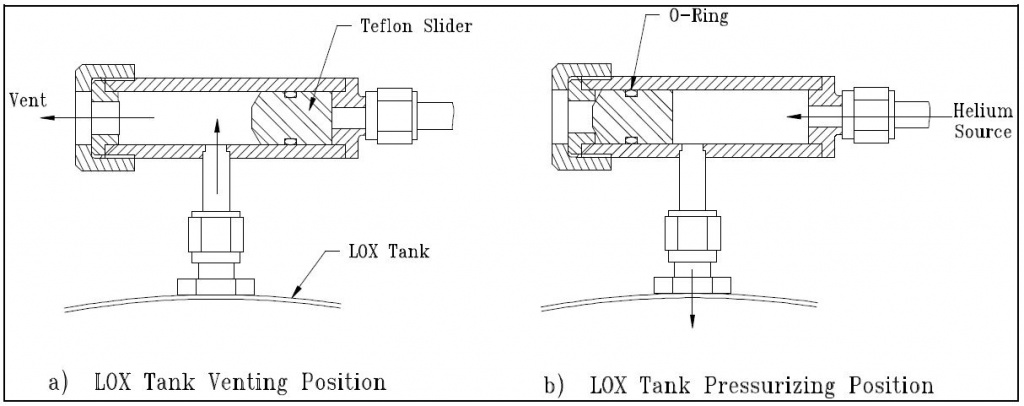Dave Nordling, Secretary, Reaction Research Society
The Reaction Research Society (RRS) met for our last monthly meeting of the year on December 13, 2019, at the Ken Nakaoka Community Center in Gardena, California. We had a full house with three different universities represented and a few returning members who came out to see how this year was ending for the society. The Compton College STEM club came out and some of them joined the RRS that night. Compton College is working on their own liquid rocket build which may next year see some important testing conducted.

Frank Chandler who is the director of Cal Poly Pomona’s (CPP) liquid rocket group and an RRS member was also at the meeting to discuss a March test date at the RRS MTA. He mentioned that Cal Poly Pomona recently had a tour of the AstroPak company in Downey, California. AstroPak has been in the business of cleaning mechanical parts for oxygen service for many years. The CPP students got to see each step of the process and learned the importance of maintaining this cleanliness throughout operations. Nearly all liquid rocket projects have decided to use liquid oxygen which has it’s own challenges to meet. Studying and keeping good cleanliness practices is paramount to avoiding catastrophe.

We also were happy to have our director of research, Richard Garcia, calling into the meeting. Frank Miuccio and Chris Lujan have been very helpful in establishing a call-in number for some of our former and current members to call in when they are away from the city. We hope to have more of our membership calling in so that they may remain informed and active with their membership in the society. As per our tradition, we always value those making the trip to visit us in person.
After calling the meeting to order, and the reading of the treasury report, we covered our agenda items. We covered nearly all of our agenda and had time for special presentation from two members of Long Beach Rocketry at California State University Long Beach (CSULB). The purpose of their visit was to introduce themselves to the RRS.


Corey Fraga and Dan Dao gave us a short presentation of their team and some of their recent accomplishments. Their solid motor rocket project started in 2015 and has done well in recent competitions including the NASA University Student Launch Initiative (USLI) taking fifth place among a long list of worthy competitors. They also brought their most recent prototype vehicle which has a quadricopter drone built into the cargo bay. After the rocket completes its flight and gently touches down from its parachute recovery system, the cargo bay opens from an electric motor driven mechanism which allows the drone to take off and survey the landing site. The idea is to create a system that could be useful in planetary exploration or even in remote or dangerous areas here on Earth.

The Long Beach Rocketry group offered to give the RRS a tour of their lab facilities on campus. The RRS graciously accepted their invitation. We should hopefully announce a date soon for this event.

[1] Results from the last MTA launch
The launch report from the December 7, 2019, event has already been posted. We had a successful event despite an earlier concern for bad weather. Thankfully, the rain fell early and had cleared by Saturday morning. We were able to get our equipment set up for the event, but the society needs to invest in a simple sumping pump in case we need to remove any standing water from our bunkers or other enclosed spaces that have failed to drain from a recent rain or flooding. We are thankful to our neighbors at the Friends of Amateur Rocketry (FAR) for letting us borrow their sump pump.

I also noticed that we could use a few more cinder blocks in the blockhouse. Many of our students are too short to see over the wall and the few blocks we already have are not enough. The RRS should buy a few more cinder blocks and possibly make some standing benches to help our students see their hard work better from the safety of the observation bunker.

Another observation made was the students from the neighboring Friends of Amateur Rocketry (FAR) site were often seen walking around too close to the RRS launching site as we were conducting road and air checks for our alpha rocket launches. It appeared that they were searching to recover their rocket from their prior flight, but we aborted three different countdowns due to car movements seen, or people crossing by on the north road adjacent to our property, and even one oblivious individual who was walking downrange of our own RRS MTA launch site as we were in the count!. The RRS and FAR must better coordinate our launch and recovery protocols respecting each others’ boundaries if only for the safety of all people concerned.
FAR and the RRS often conduct events on the same day and since our societies are sharing the launch areas and have many common interests, the RRS will work with FAR to find the best approach to assure safety and smooth operations for all.
[2] Next events at the MTA
Frank Miuccio is already working on the next event with LAPD CSP. The program will likely have its first class possibly on the Friday after the Martin Luther King holiday. Five to six weeks later means that the launch event could take place in late February or early March 2020.
I’ve been planning a launch event at the RRS Mojave Test Area (MTA) much sooner than that. For too many years, the RRS MTA sits empty in January and February for no good reason. I sought to undo this trend by holding an event just with our membership the way that our society used to operate.
At first, I was able to confirm Wolfram Blume who wants to fly his booster and ramjet upper stage system, if only for a system test of his booster, staging mechanism and recovery system. The ramjet upper stage will not be fired and will be loaded with an equivalent weight of water in its gasoline fuel tank to get the correct balance of the final vehicle. It’s a bit of risk to fly the actual ramjet prototype but there is no better way to get the right aerodynamics. It should be a good test and with luck his systems all pass the first flight test at the RRS MTA.
Larry and I have been talking about integrating a commercial hybrid motor into his 38mm fiberglass rocket. If I can acquire the motor parts, Larry will help me get the recovery system and the rest of the motor mounting complete. This will be the first hybrid motor launch from the RRS MTA in a very long time.
Also, John Krell voiced his interest in re-flying his improved avionics payload in an RRS standard alpha. This one will have an expanded accelerometer range to catch the ultra-fast burn of the alpha. He’s working on improving the data rate as recent open-source software changes have downgrading the sampling by half for some inexplicable reason.

Brian Johnson and Bill Behenna each have avionics packages in development. The RRS has plenty of alpha boosters ready if members can get their payloads integrated into a suitable payload tube in time. We hope to confirm the launch manifest by New Year’s Day so I am hopeful we will have a fun launch day on January 18, 2020. We have also spread the word to our university project teams that the RRS MTA will be open for testing or flights if they can be ready on this date early in the year. The RRS encourages all teams to plan ahead and test early and often to assure their later success.
[3] Progress on the 2020 RRS symposium
Frank Miuccio, our vice president and symposium coordinator, has had some difficulties in confirming the symposium date, but we are hopeful that the April 18, 2020 will be the symposium date. We also may have the option for April 25, 2020. The Ken Nakaoka Community Center of Gardena will hopefully confirm the date for our symposium Monday.
The Long Beach Rocketry group and the Compton College STEM club have both indicated their interest in presenting or exhibiting at the 2020 RRS symposium. In many cases, it can be first come, first serve. This will be the fourth symposium in a row for us and we hope to continue the momentum we’ve built. I have a few government and private companies in mind to give us a great slate of speakers. We just need to confirm the symposium date.
[4] Treasurer’s report on the membership roster, dues payment policy change
Chris Lujan has been surveying the sign-up sheets from past months over recent years to help establish who has been attending meetings and how often. Active membership requires participation in the society as it does with any group. Attending monthly meetings is not the only means of staying active as attending launch events or participating in outside events also qualifies. The RRS is working on building a firm definition to make clear when a member is or is not active. This is important as our Constitution requires both an administrative membership class AND active membership to retain voting rights. Each year, we try to reach our past and present members but without effort on the member’s part to keep their information current, our elections and voting on important measures must go on without them. Contacting any member of the RRS executive council is the best way to keep the society updated on your whereabouts and contact information.. The membership roster is managed by the RRS treasurer.
treasurer@rrs.org
Chris is also working up some percentages for how many of our active membership are current with their dues payment. Initial estimates are encouraging, but since we have many new members who paid upon their induction, these high percentages make sense. It is our longer term members who are often neglecting their duty to keep their dues paid each year. Dues payment is also an essential element of membership.
The executive council has voted a policy change to when dues are to be paid. Effective immediately, all dues payments must be made by January 1st of each calendar year. I was glad that the society has supported this firm fixed date which makes accounting for dues much easier on our treasurer. The membership roster will also track dues payment and active membership status. For the several lifetime members in the society, this past membership class will remain and dues payment is not required for these persons, however, remaining active with the society is still a requirement to keep voting rights.
[5] 2020 Constitutional Committee report
Frank Miuccio was able to report that the 2020 Constitutional Committee has met a couple of times in the last two months and is reviewing the last page of the new draft. The committee will present its draft to the executive council at year’s end. The executive council will review the draft before presenting it to our administrative membership for consideration and a subsequent two-thirds ratification vote.
[6] Social media updates
Our social media coordinators were both not in attendance in December. The RRS continues to be active on Instagram. Our Facebook page needs some management. The RRS is also looking at trying to build a calendar feature on the RRS.ORG website to better announce events.
secretary@rrs.org
The RRS continues to use WordPress for its ease of use and simplicity, but the society has been considering reformatting and restyling our page or at least re-organizing the menu options to make finding common things easier. This will be a task for the new RRS secretary.
[7] CSFM committee on amateur rocketry
The California State Fire Marshal’s (CSFM) office has been holding hearings with the broader pyrotechnic operator’s community throughout the state this year. Most of the community is made up of the fireworks and special effects community. Amateur rocketry is a smaller and separate group which has our own interests we operate very differently from the other larger groups.

Mark Holthaus of FAR has been reviewing the definitions pages of the California laws relevant to amateur rocketry. The RRS and FAR have met on three different occasions in the last two months. The RRS has found FAR’s proposed changes to be very reasonable and accurately reflect how we can continue to operate safely. We have also included feedback from members of the Rocketry Organization of California (ROC) at the last two meetings. David Reese of ROC has been particularly helpful in improving and clarifying the language which governs our hobby and we are also grateful for his assistance.
Mark has made arrangements to discuss our proposed changes with the CSFM office on Monday, December 16th. We hope this informal meeting goes well and that all of our recommendations can be implemented which will assure both safety and legal operations for our groups. Some of the amateur rocketry groups are not national organizations and would be harmed by excessive regulation from the state. The CSFM office has been very welcoming and open to ideas thus far. CSFM has not often held these kinds of reviews and the RRS recognizes the great opportunity we’ve had to help shape policy for everyone in rocketry in California.
[8] RRS executive council election results for 2020
Larry Hoffing, our appointed election chairman for this annual election cycle, certified his results to the membership at our December 2019 meeting as required per our Constitution. Each officer was elected by unanimous vote. Our new executive council officers starting in January 1, 2020 are as follows:
Osvaldo Tarditti, president@rrs.org
Frank Miuccio, vicepresident@rrs.org
Drew Cortopassi, secretary@rrs.org
Chris Lujan, treasurer@rrs.org
The RRS is grateful to our election chairman, Larry Hoffing, for fulfilling his duties to the society. The council will appoint a new chairman next November when we hold nominations for the next election cycle. The society is thankful to our new and returning officers who have stepped up to serve the society for this next exciting year, 2020.
[9] Proposed RRS MTA standard fee schedule
The RRS has become increasingly active with more and more requests to use our Mojave Test Area (MTA). This is a very good thing, but often scheduling of hot-fire events has become excessively chaotic. The RRS understands that sometimes things happen that can force cancellation of a planned event with little or no notice. Weather is often the main culprit of such things. However, as one who has participated in coordinating launch events at the MTA this year in conjunction with our RRS president, I have seen many occasions when poor planning is the only reason for a last minute cancellation. Worst yet, the society has also received far too many last minute requests for use of our site. The RRS is in the process of drafting a standard fee schedule which will explain the requirements for outside users of the MTA. The exact details of this forthcoming policy are still under discussion, but the following is some of the ideas that were discussed.
The RRS is happy to help as many organizations as we can, but our customers must understand that:
(1) We are a volunteer society. Few, if any, of us are paid for the substantial time and resources spent to make these events possible. While we often generously donate our time to support and promote these events, the society needs money to operate and improve our site and this must come from charging fees to pay for repairs improvement projects. A standard fee schedule will be drafted, reviewed and approved by the society before the end of the year.
(2) We operate the RRS MTA by APPOINTMENT ONLY! There is no sign-up calendar like what is used by other amateur rocketry organizations such as FAR. We operate in this fashion because we stress the importance of advanced planning. Last minute requests for using the MTA site will very likely be rejected. Rocketry is a dangerous hobby and the importance of careful preparation is reflected in the desire of the RRS to accept only advance notification for all proposed projects. This not only makes planning events easier for all parties, but it makes them safer. Contact the RRS president for all requests to use the RRS MTA.
(3) Our indemnification forms are required to be signed and submitted by ALL PERSONS well in advance of attending the event. This includes spectators, spouses, significant others, and children. This has been standing policy at the RRS MTA and will remain so. Just showing up at our MTA site on the day of the event is NOT acceptable and people will be turned away if our policies are not respected.
(4) We expect several weeks advance notice to conduct a thorough review of each new project. This means that all groups must have their operating procedures, checklists, drawings, schematics already prepared for the pyro-op’s review when the request is submitted.well in advance of the requested event date. Expecting the pyro-op to examine your intended test article and procedures for the project only on the day of the event upon their arrival is NOT REASONABLE.
Events at the MTA will be conducted with a pyro-op appointed by the RRS. Our pyro-op should have had the opportunity to see everything well planned and well in advance. Attending RRS monthly meetings is an excellent way for potential users to familiarize themselves with the society and our expectations. Submitting your project description on an RRS standard record form a month in advance and was formerly policy at the RRS. Everyone must understand that the pyro-op in charge can refuse any test at any time for any reason making your journey out to the MTA all for naught.
Based on an accumulation of both good and bad experiences, I will undertake a project to draft an official RRS policy on testing at the MTA for our outside customers that will take affect on January 1, 2020. I was glad to get a lot of feedback from potential customers and other members at the December meeting. To our society members, please send me your feedback soon as I will be working this policy out in the next two weeks before the executive council approves it.
The RRS will begin charging standard daily fees for use of the MTA site and charging a separate daily fee for the pyrotechnic operator in charge at this event. Pricing may vary with private companies and universities, but in all cases, fees are expected to be paid before approval of the event is given by the RRS. Cancellations within two weeks of the event will result in forfeiture of all of those fees for that event date and new fees must be paid again for a new test date. When customers stand to lose their fees if they fail to deliver on their commitments to the RRS, they will better understand the importance of managing their projects better as they must now avoid the cost of cancellations. Other groups, both amateur and professional organizations, operate successfully with these kinds of policies and the RRS will be enforcing their own policies soon.
[10] Review of the Gas Guzzler ramjet project
Wolfram Blume and his wife were kind enough to stop by the December RRS meeting bringing his booster rocket for one more inspection. I will be the pyro-op in charge of his first test flight on 1/18/2020 and I wanted a closer look at how secure and stiff his fins were. Based on my inspection, his booster looks ready for rail launch. With luck, his staging and recovery systems will function without issue. Wolfram has borrowed from prior successful designs flown at ROC events in Lucerne Valley. The RRS is glad to assist him with this ambitious project.

[11] Solid propellant making classes
The RRS was approached about restarting our composite grain propellant making classes at the RRS MTA. After some careful assessment of our equipment, resources and available personnel, the RRS is not yet ready to offer these classes again. Twenty years ago, the society held a few of these solid motor building classes which became very popular. The RRS is building back our capabilities and this will take some time.
The Friends of Amateur Rocketry (FAR) has offered similar classes at their site and for the time being, the RRS must refer interested parties to them.
[12] SuperDosa project update
The SuperDosa project was established two years ago with the intent of the RRS restarting our large solid motor building skills to progressively build larger vehicles able to not only breach the von Karman line (100 km ASL), but surpass the current amateur rocketry altitude record holder. Despite our increasing membership, we have not had much progress to date. Given my commitments to several liquid rocket projects, I am handing over my leadership duties to Drew Sherman. Drew is a founder of Leo Aerospace and also an active RRS member. His interests very much align with this project and with the combined resources of others in the society building high powered motors, we hope that Drew can continue this project to its lofty goal of bringing the title back to the Reaction Research Society.
[13] RRS MTA facility improvements
Osvaldo Tarditti, our society president, continues to lead our MTA facility improvement projects, chief among those is improving our bathroom facilities at the site. Osvaldo has drafted plans for an improved bathroom facility at our remote RRS MTA site. The RRS will be soliciting bids from local contractors soon and we hope to commence this important improvement at the MTA sometime this spring and complete by the summer. The society has nearly enough funds for this project, but we are hoping to receive a few more thousand dollars to initiate this project sooner than later.
Also on our list of improvements is a blockhouse replacement, horizontal mounting plate at our testing area to create a regular interface pattern for future users rather than continue the unregulated drilling of anchor bolts (and the hated “male” variety of these anchor bolts) into our concrete slab. RRS members, Dmitri Timohovich and Wilbur Owens have been supporting the society on this improvement as it will require heavy equipment to place and secure this trench plate at the RRS MTA.
Larry Hoffing has recognized that the society will soon need a second 40-foot container for storage. We will be acquiring some new solid propellant mixing equipment and we need to rearrange our inventory in a more organized and accessible fashion. Whether this comes in the form of a new container on our MTA site or possibly one given to us from our site tenant, Polaris Propulsion Inc., remains to be seen. The society will continue to monitor progress and set goals to complete these tasks.
IN CLOSING
This will be my last monthly report as I am stepping down as secretary of the RRS. I have enjoyed serving in this role for the last three years, but it is time for me to allow a new secretary to lend his voice to you, our readers. I will remain active with the society, but only as a member engaged in many projects around the society. The society grows as we bring new members in and the society gets new ideas. It is also important that we also get new leadership from time to time. I hope to see more of our new administrative membership step up for these executive council roles in the future. There is no better way to help the society than with service.
As my last parting comment, I would encourage ALL of our membership to write and submit articles. The RRS.ORG website is one of the best ways we educate and inform the public about the things that interest the society in rocketry. Even simple academic subjects are excellent ideas. Next year, you may see a couple articles from me, but I want to encourage all of our membership to do more than just mention ideas in conversations, but write them down, text them, email them, convey them to the RRS secretary. It is the job of the RRS secretary to be the chief editor and means of publication for our membership. Past articles are welcome as we have re-printed ones from our long past. We also heartily welcome new content. Any time is a good time to submit.
Our next meeting will be held January 10, 2020, at the Ken Nakaoka Community Center at 7:30PM. If there are questions or corrections, please notify the RRS secretary. After January 1, this will be Drew Cortopassi.
secretary@rrs.org
With gracious thanks to the society, I hope to see everyone in the new year.







